Cecilia Tan's Blog, page 8
May 29, 2018
Book news: Initiates of the Blood publication delayed
Oh, the ups and downs of publishing. I figured I better post about this since some of you are starting to wonder… hey, weren’t you supposed to have a book come out around now?
If you’ve been following me any time since 2013, you might have heard me mention The Vanished Chronicles, my sex magic urban fantasy series, that Tor Books bought back then. At one point the first book was slated for release in 2016, but that turned out to not be a realistic target. However, I really didn’t expect it to take an additional three years for it to see the light of day. But that seems to be what’s happening.
A bit of background: I turned in the manuscript in September 2015. A few months after that, David Hartwell (rest in peace) died of a brain bleed, and all of Tor Books was thrown a-kilter as other editors had to try to pick up his workload while simultaneously grieving. I didn’t hear back from my own editor for nine months. (That’s considered a long time by Big 5 publishing standards.)
By the time I did hear back, I had written two other books for other publishers and Trump was on the verge of being elected. I wasn’t the only person who found it difficult to work during the noisy, anxiety ridden months leading up to the election or in the months afterward. The rewrite took longer for me to do than the first draft. I eventually finished it and turned it back in… and it was slated for May 2018 release… and then it mysteriously slipped to September 2018… and then came another long wait for me to hear back on the rewrite.
Notes came back on the revised manuscript asking for just a few last changes to clean it up. I did those. Book two was due on her desk by that point, in September 2017, but by that date my editor still hadn’t signed off on the final rewrite of book one, and I felt I couldn’t write book two until I knew we weren’t making any more changes in book one. Maybe other authors could, but with a complex magic system and an overarching plot to the series, I just stalled.
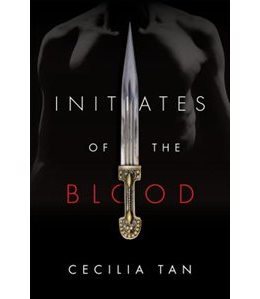 The old cover, which supposedly we’re ditching now.Meanwhile we had been promoting book one. Many of you have seen the black cover with the ceremonial knife on it. I handed out swag of it at RT and other conventions throughout 2016 and 2017. I started a Thunderclap for it. Et cetera.
The old cover, which supposedly we’re ditching now.Meanwhile we had been promoting book one. Many of you have seen the black cover with the ceremonial knife on it. I handed out swag of it at RT and other conventions throughout 2016 and 2017. I started a Thunderclap for it. Et cetera.
In December of 2017, we finally got acceptance of book one with no more changes, and I felt I could finally START really writing book two. At that point though, after two years of delays, my editor’s feeling was that the cover we had been using was rather dated, and honestly she never loved it anyway. I thought it was okay and at least not objectionable, but I would be happy to see a more eye-catching cover put on it. She also felt that this type of series will die on the vine these days if they only market one book at a time without a firm date for the next release. So she said they would like to push back release of book one again until we actually have book two in hand.
If I’d been almost ready to turn book two in, I would have fought and said look, this book is already two years late launching. But the truth is I’ve barely started book two. And I would like to see this series have its best chance to survive. So in December we said let’s go back to square one on the series design, do all three covers at once, and move forward from there.
Of course now in a few days it will be June, and I have seen no sign of new cover designs. And I have not made as much progress on book two as I should have over the winter, but some extenuating circumstances hit me, as well: I took over the Fetish Fair Fleamarket on a temporary basis when NELA’s leadership had a #MeToo era implosion. The good news is that a few days ago I handed over the bank accounts and everything to newly installed board members, the FFF is in good shape, and I can now get back to my life!
Including writing this book. To that end, I’ve also turned down some speaking engagements and cancelled plans to attend some conventions this summer. I won’t be at RWA in Denver.
I *will* be at Worldcon in San Jose in August, however. Hopefully with some shiny brand new cover designs to show you! And maybe even a future release date…? We’ll see how much I write in June and July.
April 18, 2018
Seeking stories from authors & beta readers about incorporating feedback, critique

So I’m teaching a couple of writers workshops coming up, and I’ll be talking about the various kinds of feedback and critique writers can, should, and will receive throughout the writing and publishing process. I’ve gathered a lot of stories already, but I’d like to hear more from both authors and folks who give solicited feedback: critique partners, writers groups, beta readers, and sensitivity readers.
It’s OK to remain anonymous if you don’t want to out yourself or who you’ve worked with. I’d like to hear stories of when feedback worked well and also when it did not.
Some questions to think about and the type of information I’m seeking:
Authors:
Which kinds of feedback have you worked with before? Did you discover one type of feedback worked better for you than others? What *didn’t* work for you? How did you go about soliciting the feedback? How did you meet the person or people? Did you thank them publicly/in the book? Did you compensate them in any way? Can you describe to me some specific advice you were given and how it changed the book or story, what you did to revise, and whether it changed the way you wrote future work? Both good and bad experiences would be helpful to hear. How do you decide which feedback to incorporate and which to leave aside?
Beta-readers and critiquers:
Are you also a writer? Do you specialize in some specific type of critique (whether sensitivity reading or specific genre expertise or knowledge i.e. police procedure, medical)? How do you provide feedback? How did you meet the author(s) you have given feedback to? Can you give a specific example of advice you’ve given in the past? Do you feel authors actually listen? Can you give examples of when you feel your advice was taken the wrong way?
For writers who also give critique (either to a critique partner or writers group):
Do you feel like you give the same kind of critique you want to receive? How does critiquing the work of others help your own writing?
Please either leave your responses in comments below (anonymous responses OK, just don’t put your real name or email in the comment fields) or email me at ctan.writer @ gmail.com
—
Image credit: Mohamed Hansen, Pixabay
March 27, 2018
Viceland TV’s “Slutever” Talks to Erotica Writers about “Women & Monsters”
If you haven’t seen it, Karley Sciortino, the writer of the Slutever blog and a regular for Vogue magazine, has a Vice TV video documentary series (also called Slutever). In December I went to NYC for an erotica reading they were filming that fit this week’s episode’s theme, Women and Monsters.
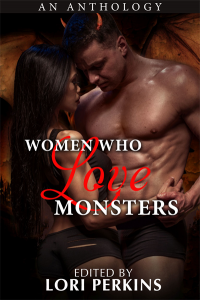 New anthology
New anthologyCheck out this preview featuring me, Laura Antoniou, Lori Perkins, and a couple other folks who were at the reading! “Women Who Love Monsters” was the reading theme, and by the end of the evening, Lori, who is director of Riverdale Avenue Books, had decided to put out a call for an anthology. That book is launching this week as well, to coincide with the ViceTV air date. I have a brand new story in it–the one I wrote for the reading specifically to coincide with the theme.
Interestingly enough, while the male-gaze pleasing Hollywood conceptions of Beauty & the Beast, The Shape of Water, and King Kong tend to make the pairing “monster and human female” it tuend out I had never written that in a story. Whenever I had merfolk or cat-shifters or such it was always the female character or *both* characters who shifted/were monstrous. So I had to write one on the train on the way down, and it came out fantastic. Nothing like a deadline to motivate me, eh?
[image error] Funnily enough, most of the stories at the reading had female monsters, and when I mentioned this to J. Blackmore, the editor of the “Beauty and the Beast” themed erotica anthology A BEASTLY AFFAIR, she mentioned that was true of many of the stories in that book as well. (Now I’m editing an anthology on a similar theme, though not limited to female characters at all, entitled “Fantastic Beasts and Where To F*** Them” and I am seeing more of that trend. Methinks erotica writers write more about sex as transformation, and in fiction the main character has to have agency, rather than centering on a passive role.)
Funnily enough, most of the stories at the reading had female monsters, and when I mentioned this to J. Blackmore, the editor of the “Beauty and the Beast” themed erotica anthology A BEASTLY AFFAIR, she mentioned that was true of many of the stories in that book as well. (Now I’m editing an anthology on a similar theme, though not limited to female characters at all, entitled “Fantastic Beasts and Where To F*** Them” and I am seeing more of that trend. Methinks erotica writers write more about sex as transformation, and in fiction the main character has to have agency, rather than centering on a passive role.)
A snippet of the segment I’m in:
#fp5abb3f6130df1 {
background-color: #000;
}
You can tell the reading took place in a bar (The Daisy) because of how red my face is–that’s what happens when you put alcohol into the fine-tuned machine that is my body! *smile*
At Heliosphere we had a screening of the whole 6 minute segment at the reading and Vice did a fantastic job of capturing why so many of us find writing erotica about monsters empowering. A friend recently binge-watched all the Slutever episodes and I’m probably about to do the same! Thanks, Karley, for including us on your journey through 21st century women’s sexuality!
Trailer:
#fp5abb3f6130e74 {
background-color: #000;
}
March 16, 2018
The #ICFA39 Panel on Power & Politics in SF/Fantasy/Horror
I’m live-blogging this from the writers panel on Power & Politics at ICFA 39 (International Conference on the Fantastic in the Arts: Orlando, FL). When I do a live-blog typing like this I capture about 60% of what is said, so this is just a fraction of all the commentary and discussion. (And any bad grammar or things that don’t make sense are definitely my fault and not the panelists!)
 Sally Weiner Grotta, Sam J Miller, Mary Anne Mohanraj, Fran Wilde, Stephanie Feldman at ICFA 39
Sally Weiner Grotta, Sam J Miller, Mary Anne Mohanraj, Fran Wilde, Stephanie Feldman at ICFA 39On the panel:
Fran Wilde
Mary Anne Mohanraj
Sam J Miller
Sally Weiner Grotta
Moderated by Stephanie Feldman (Crawford award winner and current anthologist in Who Will Speak For America.)
Stephanie Feldman: My opening statement: All art is political; it either enforces the status quo or challenges it. Does speculative fiction have a particular relationship to politics though?
Panel: (silence)
Mary Anne Mohanraj: Okay. I’ll put on my professor hat for a while. When we’re teaching we talk about cognitive estrangement. By saying here we are on another planet, we’re talking about aliens, then you can start exploring gender, race, neoliberal economics, and it lowers people’s defenses. If I talk about moms in Oak Park and my neighbors read it, there would be an immediate defensive reaction. But if I talk about tentacle creatures on another planet there’s a distance there which lets us get at issues.
Fran Wilde: I think the way we can re-key the map of history is the most important thing we can do and almost an obligation. Read Everfair by Nisi Shawl (who’s in the audience). It take King Leopold’s war and makes it all work out. When science fiction does it, it’s felt as entertainment, but it helps make us better humans.
Sally Weiner Grotta: In the human political environment, it’s very easy to hate the other if we do not know the other. It’s so important to take it out of the local context to create empathy for the other. Those who don’t empathize with their neighbor who is slightly different might still empathize with this person on Mars or Alpha Centuri. One of the key problems in our current society is the bankruptcy of empathy. As authors we can help people re-establish it within themselves.
Sam J. Miller: I think sf/fantasy gives us the vision about how we can make things better. You can use it to warn people, to explain how fucked up it is, you can be a cautionary tale and show people whats’ wrong with the fantasies they have.
Stephanie Feldman: We have so many dystopias now, it’s so important to have some Utopias, too. And whose utopia is it?
Fran Wilde: There are so many stories where the utopia has a price, though. Even Black Panther, Killmonger is the one who is left behind so that Wakanda can exist.
Maryanne: I think we’re preaching to the choir here, everyone at this conference is going to say yeah, sf can be political, so I want to push back on that and argue the opposite. I think a lot of people walk out of Mad Max thinking Furiosa is awesome! But not necessarily saying hey we have to get on this water thing. There is this series of essays (by Amitav Ghosh)about how to picture climate change. The consequences of it are so big that when people read sf they can’t bring it back to our world. It’s different from Handmaid’s Tale which addresses things people feel acutely all the time instead of things that are in the future or on another planet. It’s happening “over there.”
Fran Wilde: Why is that, though? Neal Stephenson sneezes and Google races out to develop it as the next hot thing. Why isn’t that working on climate change?
Mary Anne Mohanraj: I don’t know–it’s not my argument, it’s his argument. But we don’t want to look at it. We have, for lack of a better term, a big blind spot about it.
Sally Weiner Grotta: Well and then we have the people who think it’s all fictional to begin with! So if you write a fictional representation of it, the conspiracy theorists will say well you write fiction anyway. James Baldwin said: “You write to change the world, knowing you probably can’t, but if you can change it by one millimeter, then you have.” I think we can have some effects.
Sam J. Miller: We are challenge how people think and behave but I think we do it in support of the people who are actually trying to change the world as opposed to being the ones who change it ourselves. As writers we don’t exist in isolation. So treating it like we’e offering one piece of what we function politically in the world.
Fran Wilde: And you have other jobs. None of us are just writers. We have to do other things. Like you working with the homeless in New York and Mary Anne, after the Trump election you ran for office.
Mary Anne Mohanraj: yes, I ran for library board and I won, which is the smallest office. But if there was one thing I wanted people to come away from this panel it was go vote.
Sam J. Miller: It’s also though that voting is important but it’s one day of the year. The rest of the year call your reps, go to protests, read a book, write a book, even if you can’t vote.
Fran Wilde: The thing is sometimes our language has been taken away from us. The language of climate change has been disallowed. Legally you are not allowed to. Part of our job as writers is to take that language back. Omelas, but also Frankenstein, and Paolo Bacigalupi, he gives you your words back.
Mary Anne Mohanraj: I think we have to be careful not to give up just because a problem is big. It’s part of our job to say I know it’s a big problem. Maybe if I’m a polish writer trying to write about the Soviet era I need to put it into science fiction so I’m not thrown into jail.
Fran Wilde: And many writers did reclaim the Russian language through science fiction.
Stephanie Feldman: But what can we do to affect the change or tell the stories we want to tell? I wrote one for Welcome to Dystopia, and we were asked to envision the dystopia that would happen after the election. I was reading Twitter and I was realizing my story actually seemed better than what was actually happening. I didn’t go dark enough! It’s a problem. If we need to imagine near future that’s a challenge and people become very quickly adjusted to it. Natural disasters are not shocking to them anymore. How can we go after those folks?
Mary Anne Mohanraj: I’m happy my story in Welcome to Dystopia hasn’t happened yet. I did go dark enough.
Sam J. Miller: But you don’t think things are going to change until they do change. Look at gun control: Parkland happened and now we have kids fighting back in really effective ways and the conversation is actually changing as a result. Even the really intractable-seeming problems can *snap* get fucking fixed.
Mary Anne Mohanraj: I just read the graphic novel March by Congressman John Lewis, working for voting rights in the south. He was a student activist. And the thing that struck me is that you have to march again and again and again. You don’t just have one march. First time you get a small number of people out, and then they go back to the classroom and talk about it, and then the next time 2/3 of the class march. And so on.
Sally Weiner Grotta: The school is named after an activist who fought for the Everglades and taught her by their example not to back down. That kind of story example can inspire communities.
Fran Wilde: But there are lots of schools where they taught gun control…
Sally Weiner Grotta: Well it’s that they were teaching a culture of not accepting the status quo.
Fran Wilde: Parkland is a watershed, but the families that have died in previous protests in Philadelphia and St. Louis are being rolled over.
Sally Weiner Grotta: I believe in the zeitgeist, in that spirit, and that it’s a moment that people have seized.
Mary Anne Mohanraj: Well and you had a bunch of tech savvy theater kids there who used the Black Lives Matter model to exercise their privilege and spread their message.
Stephanie Feldman: This is what we were joking, is what happens when you raise kids on The Hunger Games. They’re ready to rise up.
Mary Anne Mohanraj: You look at Gandhi. He was a PR genius. He staged a lot of things very visibly, very dramatically. And sometimes I think activists forget that part of it.
Stephanie Feldman: To bring things back to writing and science fiction. Did any of you stop writing after the election.
Mary Anne Mohanraj: Some did. I had one student whose advisor finally told her, “That man doesn’t get to take your novel from you.”
Sally Weiner Grotta: In real society we haven’t seen the Caligula-like despot before. To a certain extent we are more prepared as writers for living in the sf/f realm to try to understand how it world. It gave me more of a push that I need to form stories that make sense in this word that makes zero sense to me.
Sam J. Miller: You want to believe that we’re better than this. But we’re not. Part of what made the 2008 elections so transformative, we thought hey, maybe we’re not so bad after all.
Fran Wilde: Spoiler: we are that bad.
Sam J. Miller: My novel Blackfish City we sold the week before the election so I was writing it a year before, and it’s very much an anti-Trump book. The latest US government has collapsed and pundits are saying it’ll be the last one. A lot of us were already writing about how fucked up things are, and now our little Cassandra complex is everyone can see that it’s fucked up.
Fran Wilde: I helped beta Twitter. I live on Twitter. Watching the twitter philosophy narrative form on election night and the local news in PA had a completely different narrative. They were talking about a culture I didn’t understand. Pennsylvania isn’t a culture I understand anymore. The fact that there are people who want to take away my life by cutting off health care is enraging, and to watch my friends losing their care and their health. I didn’t want my fiction work to be about that narrative. I did not want to write about domestic violence and kids surviving it. I did write an article about a family member for the Washington Post that I said they could publish after this family member died, but then when Trump happened I let them publish it. It’s sort of now or never.
Mary Anne Mohanraj: What I was writing about politically before all this was about the Sri Lankan civil war. I translate it into sf and fantasy and I come back to it again and again. In some ways I’m a utopian. I think of Elie Wiesel and Anne Frank saying I believe people are good at heart. I don’t believe in empathy. I believe we have a failure o first premises. Most people who are democrats have parents who are democrats. And most republicans had parents who were republicans. I think everyone is trying to be “good” within their framework. So after the election, my impulse was hey, I’ve been over here having this conversation about Sri Lanka and neighbor against neighbor but also how people put themselves at risk to save others, the Singhalese neighbors who sheltered their Tamil neighbors at risk of their own lives. So now my focus has been talking to republicans in my community. And there aren’t a lot them because I live in ultra liberal Oak Park. In our library for example we got rid of fees. As we were going on the campaign trail people were saying don’t you support people having to learn responsibility. And I didn’t tlel them the library isn’t job to teach that. Upper income students are in my office the very next day if they miss a test, whereas lower income students have a shame spiral where they just don’t show up in my class ever again. So I tell this to the nice old ladies in our garden club aren’t these the people we most want to have in the library? You have to reframe it for them. They have tears in their eyes when they find that out. They have empathy. But they don’t know how things are. So much of what’s in our country has been subjugated to corporate interests.
Nisi Shawl (question from the audience): Is there a step toward the future we want though? Is there the equivalent of the Star Trek communicator becoming the flip phone. Is there a climate change story we could tell?
Fran Wilde: I like alternate histories for that reason, though. So we can see a different path. How do you re-envision a technology or a society so that it works better?
Sally Weiner Grotta: There’s a lot fo things going on in third world countries that we aren’t even aware of. like using plastic bottles as water condenser taking words out of the air. You can use those kind of things for a story.
Fran Wilde: That’s a word I really want to take back: “third world country.”
Mary Anne Mohanraj: A better word is “developing country” if that’s what you mean.
Karen (in the audience): Where is the power to change? Is it at the top? Is it in the middle? Where can we make that incremental change?
Mary Anne Mohanraj: But it’s like Sam was saying when I was talking about voting, it’s not about whether we have power it’s whether we use it. There are so many things you can do, but most people aren’t doing them. The kids at Parkland is the pointy end of the stick but there’s a huge wedge behind them.
Sally Weiner Grotta: One of the things the election made me want to do is to include more speaking and workshops in my career, and teaching people to listen to each other’s stories. The ability to teach storytelling is a powerful thing that we have. That’s one of the things I believe in.
Sam J. Miller: The power to make change always lies with the people most impacted by the problem you’re trying to solve. It’s not about savior of the oppressor deciding to stop. I always think of “what’s your primary audience?” If there’s just one group, who is it? For me it’s the young queer folks who aren’t seeing themselves. TO me it’s a function of who are we writing for. If there’s a problem we’re writing about, center the narrators of the folks who are most impacted.
Mary Anne Mohanraj: But there also nothing about us without us. If it’s me and my position of privilege saying I think they need X, but if they’re voices are not there I’m not doing it right. Thinking about Gandhi, about coming to India after being a British taught lawyer and working in South Africa, but it was the white western media who were worked by him.
Sam J. Miller: But then you look at the Civil Rights movement of the sixties, there were people of all different types involved, but it had to be the black leaders who were the leaders.
Mary Anne Mohanraj: The Space X folks asked us as sf writers to ask about future housing solutions, and they asked who are the stakeholders in this project? How do you engage them?
Audience member: We start reading SF as an escape, but now we’re moving toward attacking problems our real world. How do you handle that?
Mary Anne Mohanraj: I just started reading Roxane Gay and I need to take breaks. I think there is a place for escapism. Right after the election a lot of people fell into a pit of despair, and something light and charming can help you out of that.
Fran Wilde: We also don’t write the same thing again and again, either. We have that variety that lets you see multiple sides of the same issue. Some are funny and some are less so. I’m funnier on Twitter, honestly… But that variety and also reading other people is something that as writers we have to do. Give yourself the permission to breathe.
Sally Weiner Grotta: As writers our fist responsibility is to our readers to tell a good story, develop good characters, and then we express our angst about the future, but we do it as a good story, weaving the reader through the issue. like MAM I tend toward hope against my rational self. That’s what drives me more than “I want to write about climate change.” It’s more “I want to write about this girl and her family” who have run out of water.
Stephanie Feldman: A completely idealistic ending won’t feel true, but a completely despairing ending won’t feel true either.
Fran Wilde: What’s so frustrating is watching all our best plot lines being stolen by the actual news!
Sam J. Miller: I think Black Panther is the best kind of escapism. It has really nuanced exploration of real world issues. We provide not a sense of happiness so much as a sense of justice. Maybe everyone die, but in a story their deaths have meaning. We give people something. The movies and books are the ones that make me feel like I have a place in the universe. If that’s illusory, well, okay.
Mary Anne Mohanraj: That’s lovely but I don’t know that I agree. I don’t know that I’m actually full of hope.
Fran Wilde: On this panel you are! I’m sarcasm, you’re optimism, and Sam’s nihilism.
Mary Anne Mohanraj: I think there’s less pressure in mainstream lit to have happy endings. Why is it that there is some expectation to have sf/f end on a triumphant note? At the end of book 1 of the Hunger Games you have the triumphant hero arc, but it starts to unravel at the start of book 2, and by book 3 you know that she has made her own way of doing things but the power structure is all still there.
Lynette (question from the audience): What are stories that felt like it helped you see something you were powerless about or that made you go do something about it?
Mary Anne Mohanraj: I think feminist sf of the seventies is what made me take my husband down and say “we have to talk about chores. No this is not an even split and I’m doing more and more, and he was like no, it’s even… and we made a chart and charts things for a week. He was actually doing better than most husbands but it still wasn’t equity.”
Sally Weiner Grotta: I was reading Dickens around 6th grade and that was a big call to arms for me. About how society can fail people and how good people in society can still go wrong. It really shaped me going forward.
Sam J. Miller: I should have so many answers to this question, but I don’t.
Fran Wilde: I can think of various characters but not books really. Various books various stories put characters in trauma or injustice. The Summer Prince by Alaya Dawn Johnson is a big one. A lot of Alaya’s stories do that.
Mary Anne Mohanraj: Going back to the feminist sf of the 70s: Joanna Russ gave me permission to be angry.
Sam J. Miller: We should have this conversation on Twitter because I know lots of people will have them. I’m going to say The Handmaid’s Tale showed me how things go so quickly from bar to worse. I understand the mechanics of oppression and how people participate in their own oppression from that book, it really sharpened my understanding.
Mary Anne Mohanraj: Look at the Defense of Marriage Act. I think one reason it happened faster than expected is because of Will & Grace. Will & Grace humanized a lot of gay people for a lot of people. It’s a slow change and it’s cumulative now that things are imaginable. I wrote a story with two lesbian girls in Sri Lanka in the 1940s and did a reading from it. And my dad comes up to me and says “How did you do the research? How are you sure there were lesbians there?” He really thought lesbians were only in the West. He’s a well educated guy but he really couldn’t see it. It goes back to cognitive estrangement. Showing you a world so different from your own that it makes you question your own assumptions.
There were more questions from the audience at that point, but my fingers were getting tired of typing!
Some books by these nice folks:
March 13, 2018
FINALISTS ANNOUNCED FOR THE 2018 NLA-I WRITING AWARDS
I just got this press release from NLA: International with the finalists in the NLA Writing Awards and thought I’d post it to share with all. This year I wasn’t involved in the judging so this is my first time getting to see the finalists! Looks like a great crop of books and stories!
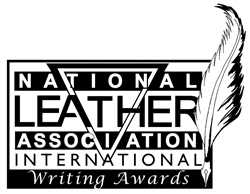
(Columbus, OH) — National Leather Association – International (NLA-I), a leading organization for activists in the pansexual SM/leather/fetish community, announced today the finalists for its annual writing awards. Named after activists and writers Geoff Mains, John Preston, Pauline Reage, Cynthia Slater, and the groundbreaking organization Samois, they are awarded annually to recognize excellence in writing and publishing about Leather, SM, bondage and fetishes.
The finalists for the Cynthia Slater Non-fiction Article Award are:
“Super Tight: A Fetish For Restraint” by Claire Rudy Foster which appeared April 20, 2017 on TheRumpus.net
“A Defense of Erotic” by Jeff Mann which appeared as the introduction to his book Consent which was released April 28 , 2017 by Lethe Press
“California Dreamin: West Coast Directors and the Golden Age of Forbidden Gay Movie” by Jack Fritscher which was released in the U.S. in early 2017 after originally being published by Editions Mustache in the U.K. December 14, 2016
The finalists for the Geoff Mains Non-fiction Book Award are:
The Big Workbook For Submissives by Rebecca Blanton (Auntie Vice Productions)
Better Bondage For Every Body by Evie Vane (Wanton Press)
Gay Pioneers: How Drummer Magazine Shaped Gay Popular Culture 1965-1999 by Jack Fritscher (Palm Drive Publishing)
The finalists for the Pauline Reage Novel Award are:
The Master Will Appear by L.A. Witt (self published)
Insatiable by Jeff Mann (Lethe Press)
The finalists for the Samois Anthology Award are:
Unspeakably Erotic: Lesbian Kink by D.L. King (Cleis Press)
The finalists for the John Preston Short Story Award are:
“Winter Fantasia Captive Club” by Jeff Mann which appeared on Great Jones Street reading app
“The Artist” by Daniel Erickson (self-published)
“Sand Trap” by L.M. Somerton (Pride Publishing)
“Falling Action” by Kiki DeLovely from the anthology His Aura: A Collection of Transmasculine Erotica ed. Shaun J. Phree (Phreedom Publishing)
“Pygmalion” by J. Belle from the anthology Unspeakably Erotic: Lesbian Kink ed. D.L. King (Cleis Press)
“The Brute and The Brat” by Sinclair Sexsmith (Maverick Press)
The winners will be announced at the National Leather Association – International’s Annual General Meeting, which will be held October 21, 2018 in Reno, NV in conjunctions with NLA-Northern Nevada’s event, Revelry. We hope our finalists will attend the AGM to receive their awards and congratulate the winners. Please keep an eye on our Facebook page for more information.
For more information about the awards, please contact the Award Committee Chair, CandiAnne Shafer, at awards@nla-international.com
December 5, 2017
2017 Duck Day Wrapup, Picspam, and Links
I haven’t had a spare minute to do a full write-up of this year’s Thanksgiving extravaganza that corwin and I put on, as usual, until now, that is! This post incorporates all the Instagram photos and links to various recipes I referred to online. (corwin’s recipes were mostly in books, I think.)
We always have a theme. Sometimes that theme is a cuisine (French, kaiseki). Other times it’s more conceptual, like the year we did the “Silk Road” so we could pull Far East, Middle East, and Mediterranean together, or the year Chanukah overlapped with Thanksgiving so we did each course as a different Festival of Lights (including Diwali and Yule).
This year we thought it would be fun to do something we’d never done before: AMERICAN. Here’s what the spoiler-free version of the menu looked like on our guest’s plates:

Deviled Egg
So the thing about the deviled egg is it’s a savory crisp meringue on the bottom, spread with kimchi mayonnaise (tastiest condiment corwin ever made), topped with ikura (salmon roe) and hot sauce pearls that are basically the same size, shape, and color as the salmon roe. We used Slap Ya Mama brand hot sauce and the Sphericator to make the pearls.
The crispy meringue was fun to experiment with and turns out its really quite easy. Like making meringue cookies except instead of adding sugar, you add finely grated cheese! I used basically this recipe: http://www.grouprecipes.com/43395/cheese-meringues.html
A post shared by Cecilia Tan (@ctan_writer) on Nov 23, 2017 at 5:57pm PST
Grilled Cheese Sandwich
Having totally faked people out with the “devilied egg” we figured we’d double-fake by giving them a “grilled cheese sandwich” that was actually… just the world’s best grilled cheese sandwich. Two kinds of cheese (comte and one other, I can’t remember but they came from Formaggio) on corwin’s home baked rye bread, served with a tomato soup shooter and corwin also made his own duck bacon.
Also on the plate, homemade smoked tomato powder. Because there wasn’t enough umami on the plate already…
Second course. Grilled cheese on rye with tomato soup & duck bacon. #duckday
A post shared by Cecilia Tan (@ctan_writer) on Nov 23, 2017 at 7:45pm PST
Chicken Pot Pie
Of course because it’s Duck Day this was actually duck pot pie. I made and served it as empanadas. Although I referred to a couple of different chicken pot pie recipes I didn’t use any of them. I roasted a few duck legs on the bone, then cubed up the roasted meat. I sauteed cubed carrots and onions in duck fat with some poultry herbs (parsley, sage, thyme), made a medium-dark roux as a duck-stock gravy base, mixed it all together and added green peas. No potato, no parsnip, no mushroom (although I considered wild mushrooms).
The empanada dough recipes I looked up were all pretty similar to my preferred food processor pie crust recipe (from Joy of Cooking, Flaky Pastry Dough, which can be made kosher non-dairy by using shortening instead of butter), and I ended up following the nice step-by-step instructions found at Laylita’s Recipes: https://www.laylita.com/recipes/how-to-make-empanada-dough/, except I forgot to use the egg wash on the exterior (actually corwin put the tray into the oven and didn’t realize there was one more potential step), so they came out without the dark crusty appearance you see in some photos.
In fact they came out like this:
Third course: “chicken pot pie.” It’s duck pot pie empanada with bechamel & fried sage. #duckday
A post shared by Cecilia Tan (@ctan_writer) on Nov 23, 2017 at 7:48pm PST
Served with a fried sage leaf, in a pool of bechamel sauce. They were so popular that the nine extra I had made were fought over. (Recipe made 25.) I used the Serious Eats bechamel recipe: http://www.seriouseats.com/2016/09/how-to-make-bechamel-sauce.html
Gumbo
One of our favorite things to do is deconstruct a traditional dish to highlight the various components, like the time we deconstructed a cassoulet by serving a piece of crisped confit with a white bean side (among other things). corwin’s concept for this dish was to deconstruct gumbo.
He made duck andouille sausage himself.
He made a traditional cajun “trinity” gumbo & passed it through a food mill.
He boiled the shrimp in a homemade version of “old bay.”
I made the green rice (bamboo rice) filé balls.
A post shared by Cecilia Tan (@ctan_writer) on Nov 23, 2017 at 7:51pm PST
Apple Pie
The joke here is that corwin hates apple pie. He doesn’t like the flavor of apples in general and especially does not like them cooked in desserts. Most of our friends know this. As soon as we decided on “American Classics” as our theme I challenged him, “Now you have to come up with something that is ‘apple pie’ but that YOU will like.”
He hit upon the perfect thing during our anniversary dinner (our 26th anniversary was in November) where we were served a quince-pear-apple cider as a pairing, and he said, aha! Palate cleanser! So we served the cider with an apple pie spiced slush that we adapted from an Emeril Lagasse recipe for apple pie spiced granita. (Same recipe except instead of making it a granita we just put it in the ice cream maker and turned it into a sorbet-like texture: http://www.foodandwine.com/recipes/apple-pie-granita)
“Apple pie” palate cleanser. Apple pie spiced Fuji apple slush in pear-quince-apple cider. #duckday
A post shared by Cecilia Tan (@ctan_writer) on Nov 23, 2017 at 8:41pm PST
Burger & Onion Rings
This was my Asian-fusion course. Duckburger of course, but I wanted to do them slider-size, so why not as Momofuku-style steamed buns? Served with crispy shallots, a traditional vietnamese condiment? I forgot to put the shallots on the plates because I was too busy putting all the other fixin’s, including pickles (purple daikon kimchi and Korean cucumbers), ketchup (hoisin ketchup that corwin made), and onions (scallions).
A post shared by Cecilia Tan (@ctan_writer) on Nov 23, 2017 at 9:20pm PST
A korean pickle recipe I referred to but didn’t ultimately use: https://www.maangchi.com/recipe/oijangajji
The korean pickle recipe I did use: https://www.thespruce.com/spicy-korean-cucumber-pickles-2216857
Momofuku steamed bun recipe (makes 50, I halved it and used duck fat): https://www.epicurious.com/recipes/member/views/momofuku-steamed-buns-50165535
Epicurious on crispy shallots: https://www.epicurious.com/recipes/food/views/crispy-fried-shallots-51114600
Turducken
Strictly speaking we did not make a turducken. We made a doohickey. The outside layer was a duck, inside it was a chicken, and at the center was homemade turkey sausage. Kenji Lopez-Alt is usually right about this sort of thing and his insight into turducken was don’t try to put “stuffing” inside it. Just make it MEAT ALL THE WAY THROUGH. It’s basically a huge roulade.
corwin carving the turducken. (Actually a doohickey -duck outside a chicken outside turkey sausage)
A post shared by Cecilia Tan (@ctan_writer) on Nov 23, 2017 at 11:42pm PST
corwin deboned the birds and cooked them in the sous vide before assembling them for the final roasting step. He also made a savory cornbread that he turned into a traditional cajun-style dressing, and he also smoked duck legs to make the equivalent of “ham hocks” in order to make smoky greens for a side dish. Plus gravy. Everything came out fantastic.
The full fixings: gravy, Cajun cornbread stuffing, smoky greens.
A post shared by Cecilia Tan (@ctan_writer) on Nov 23, 2017 at 11:43pm PST
Ice Cream Sandwich
Hot Fudge Brownie Sundae
Bananas Foster
All three of the desserts were served as one course, as each one was served as an ice cream bon bon. These were mostly my doing.
The ice cream sandwich was vanilla ice cream between tiny chocolate chip cookies. The biggest challenge here was making chocolate chip cookies small enough and thin yet structural. I read a lot of blogs and articles about how to vary the thickness, chewiness, and so on on chocolate chip cookies. I decided what I wanted was a very thin cookie that could be bitten through easily even if it was still frozen. I knew from previous experience that a thicker cookie, even if baked “soft and chewy” would be hard as a rock out of the freezer. I was also guided by the always on-point Smitten Kitchen, who did a post on cookie ice cream sandwiches: https://smittenkitchen.com/2006/07/good-enough-for-me/
The main secret to making very thin cookies was using Kerry Gold butter. It melts much more than regular butter. (And it’s delicious.)
The hot fudge brownie sundae was a deeply chocolatey ice cream (from the Ben & Jerry’s book), sitting atop a brownie base that I made by first baking brownies (using the recipe in Fannie Farmer, but with chocolate chips instead of nuts), then cutting the edges off and crumbling them up and balling them back together.
The freezing steps are slow. First you make the ice cream in the ice cream maker, and then pack it in a container and let it freeze overnight to be quite hard. The next day the temps were about 40 degrees out so I went and worked in our front porch to make the ice cream balls and stick them to the brownie bases, and then those all go back into the freezer for another day. The next day I made the chocolate coating by melting various chocolates together (some Callabaut, some others we had hanging around, mostly bittersweet). Then it’s about dipping each ice cream-brownie ball into the chocolate without leaving a hole in them or leaving ice cream and brownie crumbs in the chocolate. You have to do it quickly and then back into the freezer everything goes again.
I mostly used the techniques described in the Serious Eats Ice Cream Bon Bons recipe (http://www.seriouseats.com/recipes/2013/09/chocolate-ice-cream-bon-bon-recipe.html) except I had the added complication of the brownie piece. I got the idea to crumble the brownies from a Food & Wine recipe for Ice Cream Bon Bons (http://www.foodandwine.com/recipes/ice-cream-bonbons) although they leave their crumbs as a loose crust and I made mine into more of a cake ball (disc, really) and integrated it with the ice cream spheres in the second freezing step.
They came out fantastic and I am considering making a batch of these to have handy as small-size desserts just for our regular every-day eating purposes. Great way to have a small serving of ice cream!
When we served them we drizzled each chocolate bon bon with a little hot fudge from the Smitten Kitchen recipe. This was the one thing we didn’t make because as it turned out someone had given me a jar of it as a gift very recently, so we just used that. Smitten Kitchen really knows what’s what here: https://smittenkitchen.com/2009/02/hot-fudge-sauce/ (And thank you so much Kristina!)
Bananas Foster is a dessert we’ve served a few times at various dinner parties, including a previous Duck Day, but reformulating it into an ice cream bon bon was really fun.
First, the ice cream. I basically said to corwin “I want a brown sugar, brown butter ice cream with a touch of cinnamon.” He basically made a brown butter & cinnamon creme anglais (with brown instead of white sugar) and froze it in the ice cream maker. By itself this was extremely delicious.
I made slices of banana to serve as the base for each bon bon. A day after making the ice cream I scooped them into balls and froze them to the bananas. This proved to be trickier than the brownie both because the ice cream was softer in texture (even after freezing over night) and the bananas are slippery. But I eventually got them assembled and frozen.
The next day I made the white chocolate shell and the white chocolate just would not melt smooth. I think some of it had bloomed a bit and for whatever reason I could not get it to turn into a nice coating liquid. I’ve never had this problem before. Unfortunately it was the last step and I did it on Thursday when all the stores were closed and couldn’t start over with fresh ingredients and I also couldn’t risk burning it or seizing it. So I had to make it work.
In the end I used the petit four technique where you put them on a wire rack and pour the melted white chocolate over them. I figured it would be OK to have the banana exposed at the bottom. Because the texture never got completely smooth it wasn’t as pourable as I might have hoped, but it was good enough to get a kind of turtle-shell onto each bonbon. They didn’t look pretty, but they tasted great.
A post shared by Cecilia Tan (@ctan_writer) on Nov 23, 2017 at 11:44pm PST
Full Menu with Wine Pairings
We sat down to service at 8:10pm and dessert hit the table at 1:35am. Believe it or not, that was more or less right on schedule.
Amuse
“Deviled Egg”
Savory meringue, kimchi mayo, caviar (ikura),
and hot sauce pearls
Grilled Cheese Sandwich
Two cheeses on homemade rye
With tomato soup and duck bacon
Pairing: Hexamer 2015 Riesling “Porphyr”
Chicken Pot Pie
Duck stew empanada
With bechamel & sage
Pairing: Cote-de-Brouilly 2016 Beaujolais
Domaine de la Voûte des Crozes
Gumbo
Deconstructed
Andouille sausage and cajun-boiled shrimp
With a filé rice ball
Pairing: (keep drinking the Beaujolais)
Apple Pie
Palate Cleanser
Apple, pear, quince cider (from Cidrerie du Vulcain) with an apple-pie spiced ice
garnished with fuji apples
Burger & Onion Rings
Duck steamed bun with pickled purple daikon and
cucumber kim chi, with hoisin ketchup
served with crispy shallots
Pairing: Gigondas 2013
Domaine du Gour de Chaulé
Turducken (Doohickey)
Duck, around a chicken, around turkey sausage
With corn bread dressing and smoky greens
Pairing: Gundlach Bundschu 2016 Gewurztraminer Sonoma
Dessert
Trio of ice cream bonbons:
• hot fudge brownie sundae: chocolate chip brownie, chocolate ice cream, enrobed in chocolate
• bananas foster: banana, brown butter and brown sugar ice cream, enrobed in white chocolate
• tiny chocolate chip cookie ice cream sandwiches
And then there was the thing we didn’t serve. I made yuzu fruit jellies as mignardise! And completely forgot to get them out. But the recipe I used came from MyRecipes.com (http://www.myrecipes.com/recipe/fruit-jellies-1) and the uncut jellies looked like this:
A glimpse of my Duck Day cooking prep
A post shared by Cecilia Tan (@ctan_writer) on Nov 22, 2017 at 3:05am PST
November 14, 2017
WATCH POINT blog tour & giveaway wrapup!
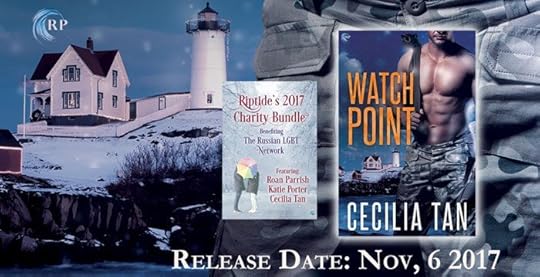
It’s been a blast launching WATCH POINT, my gay Navy SEAL abduction romance, and I would like to thank all the blogs and sites that featured the book, reviewed it, hosted my essays, and participated in the giveaway! All told 154 comments were entered the drawing for a Cecilia Tan gay fiction prize pack, including some Daron’s Guitar Chronicles swag, The Prince’s Boy, and such!
Scroll to the bottom to see the ultimate winner! :-)
Some highlights from the tour:
I did a “Down and Dirty” interview for USA Today’s “Happy Ever After” column, in which I reveal my love of Sour Patch Kids, Yuri!!! On Ice!, Queen + Adam Lambert, and Peter Tork of the Monkees.
At Heroes & Heartbreakers, I blogged about how everything I learned about wilderness survival, which is put to good use in Watch Point, I learned not on the Internet, but in the Girl Scouts:
“At first, I resisted [my mother’s attempts to get me into Girl Scouts]. I resisted anything that was associated with the word ‘girl.’ I got the Handbook with all the merit badges in it and was mildly disgusted how many of the badges were for things like cooking and sewing. (I’d already learned to sew.) But I stuck it out because there was talk of going on a camping trip. Real camping! Staying overnight in a tent in the woods! I couldn’t wait for that. The Girl Scout motto is ‘Be Prepared.’ I brought my own camping kit (including canteen, frying pan, etc), Swiss army knife, and other tools…”
At Love Bytes Reviews I posted a list of Eight Things I Learned About Navy Seals:
“The average man trying to qualify to be a SEAL can do 79 situps in two minutes. The best of the recruits can do 100. They may be the only romance heroes who actually have the abs pictured on the book’s cover.”
At Bayou Book Junkie I wrote about why I had to write our hero, Eric, in not just the first person but in present tense, something I don’t normally do, but which just worked perfectly for him:
“In the case of Eric the puzzle I needed to solve was how to let the reader see what’s going on in Eric’s head even though Eric himself avoids introspection? It was important to give the reader a deep look inside because so much of what Eric does– like kidnapping Chase–looks villainous from the outside. But inside we know he’s deeply concerned with honor and justice. This parallels Eric’s sexuality, which includes role playing and BDSM which may look abusive from the outside, but from the inside we experience as deeply caring, careful, and loving.”
At The Novel Approach I wrote about explicitly giving Eric half-Asian/half-white ethnicity and why that choice was important thematically to me:
“I am a mixed-race person, and being ‘mixed-race’ has been the ‘hip fad’ three or four different times in my life. Like bisexuality, it is a trait that is easily appropriated by authors as an easy ‘outsider’ marker, a metaphorical symbol of their character’s uniqueness.”
At OMG Reads I blogged about “Military Romance as Guilty Pleasure“:
“I am against using the term ‘guilty pleasure,’ because it is so often applied against things that we shouldn’t be guilty about [especially liking romance]. But I do have a wee bit of guilt over one corner of romance, and that’s military romance. My conscience nags me: how can you enjoy reading and writing Navy SEALs when you don’t agree with American military might being abused around the world?”
I write about the paradox of loving military heroes, but not the way our government abuses them. In Watch Point we get into the subject of Don’t Ask, Don’t Tell as the reason why Eric is no longer in the military. In future Wayward Warrior books I’m planning to also touch on other ways our government has failed to serve those who serve us, including budget cuts to veterans programs and so on.
Reviews
Dog-Eared Daydreams reviewed the book, saying:
“If you think Watch Point is your usual falling-for-your-captor story, you’ve got another thing coming. This is my first Cecilia Tan read and I was more than impressed with how she made this such an original tale of vengeance, freedom, and kink.”
The Novel Approach loved it, as well:
“I’ve always loved miscalculation as a romantic catalyst, and Eric falls into the trap of underestimating Chase from the start … and watching Eric’s respect for Chase grow was the lit match to the short fuse you know damn well is going to blow up before the happy ending.”
The one negative review (if I can call it that?) was from Boy Meets Boy Reviews, who were disappointed that the dubious consent was not dubious enough. Riptide Publishing is pretty serious about making sure content warnings are used, and Watch Point is tagged with dubious consent, BDSM, military, enemies to lovers, and hate sex. As the review states: “Most of those tags (IMO) should come with a “lite” disclaimer,” and “All the people who do not do dub or non-con, this is the dub-con for you. This might be the fluffiest dub-con I’ve ever read.”
I don’t disagree at all. Compared to my dub-con fanfic–or even to what goes on in The Prince’s Boy—Watch Point is *relatively* lighter on the transgression. 100% valid review! I still support the content warnings, though, since this is still a kidnapper/kidnappee setup, so for those who find dubious consent triggering or problematic, this is not an allergen-free book. People who are sensitive to those issues should still proceed with caution.
The Winner!
To pick the winner I compiled all 154 comments left throughout the tour in a spreadsheet, assigned by row number, and then I used the website Random.org to pick the winning number. People who left comments on multiple blogs were entered multiple times; each comment counted as an additional entry into the drawing. The number that came up was 94 and so therefore the winner is Lisa for a comment left at the Erotica for All blog!
I truly appreciate all the comments, thoughts, and enthusiasm from everyone on the tour. I’m emailing all of you a little something in thanks for making it a really fun and memorable week. :-) So thank you HB, Paul, James, Didi, Joanne, Nancy, Christina, Timitra, Jennifer, Ginger, Lee, Debby, Trix, Shirley, Jennie, Lee, Tanya, Diane, Jodi, Lennis, Brian, and everyone else whose names may not have come through. :-)
Here’s the full itinerary of giveaway stops:
1. November 6, 2017 – OMG Reads Essay on Military Romance
2. November 6, 2017 – Fangirl Moments and My Two Cents
3. November 6, 2017 – La Crimson Femme
4. November 6, 2017 – Diverse Reader – Excerpt from Ch. 1
5. November 7, 2017 – My Fiction Nook
6. November 7, 2017 – Bayou Book Junkie – Essay on the First-Person Present-Tense Narrator
7. November 7, 2017 – Creative Deeds
8. November 7, 2017 – Wicked Faerie’s Tales and Reviews
9. November 8, 2017 – The Day Before You Came
10. November 8, 2017 – MM Good Book Reviews – Excerpt from Ch. 2
11. November 8, 2017 – Scattered Thoughts and Rogue Words
12. November 8, 2017 – TTC Books and More
13. November 8, 2017 – Erotica for All
14. November 9, 2017 – Jessie G Books
15. November 9, 2017 – Dog-Eared Daydreams – Review
16. November 9, 2017 – Book Reviews and More by Kathy
17. November 9, 2017 – The Novel Approach
18. November 10, 2017 – We Three Queens
19. November 10, 2017 – Love Bytes Reviews
20. November 10, 2017 – Open Skye
21. November 10, 2017 – Unquietly Me
November 9, 2017
Researching Settings in WATCH POINT gay Navy SEAL romance

There are only two main settings in WATCH POINT, my gay Navy SEAL romance.
One is the mansion of the billionaire Aiden Milford where he lives with his son Chase. I wanted this to be in Massachusetts. I’ve lived in MA since 1990 but decided to do some research about where to put the Milford Mansion. (I knew I didn’t want to put it in Milford, for example.)
I settled on Duxbury partly because I like the word “Duxbury” and because of articles like this one in the Boston Business Journal naming it the 6th “Most affluent” community in the state.
While Googling “Duxbury mansion” I came across various candidates for the Milford estate:

Here’s a great one from the Robert Paul real estate site. Asking price $6 million.
The real estate description of it: “Rarely does an oceanfront estate of this caliber hit the market. Designed and built in 2004 with sensitivity to the 19th Century Shingle-style “Cottage”, an open floor plan and infrastructure that offer modern day conveniences, this coastal home incorporates a collection of refined details to make it a true architectural masterpiece. Taste, elegance and comfort are incorporated into indoor and outdoor spaces capturing magical views of Duxbury Bay and beyond. With private tennis, pool and sandy beach, this exceptional legacy property only 35 miles from Boston will welcome family and friends for generations to come.”

Although I didn’t use the floor plan of the building for my scenes, I do reference the grand central staircase.

Here’s another mansion in Duxbury. A mere $4 million for this one, haha. From the Estately site. Important that it has a private road to it.

A different version of a grand staircase.
Once I knew where the mansion was located, this became important:

The majority of the book, though, takes place in a cabin on an otherwise uninhabited island in Maine. After all, where else would a group of ex-Navy SEALs build their ultimate getaway but on an island you pretty much have to be a SEAL to get to?
A Google image search for “rocky island Maine” looks like this:

The island you see on the upper right is similar to what I was picturing when I started writing.
I found a great description of an island called Monhegan Island on photographer Amy Toensing’s website. See her aerial photo here: https://toensing.photoshelter.com/image/I0000waSk642OKrE
“This small, rocky island is ten miles from the nearest mainland, only accessible by boat and barely a square mile in area. Monhegan Island, home to lobstermen and painters and a popular destination for tourists is twelve miles off the coast of Maine. Ringed by high, dark cliffs, its interior a mix of meadows, marsh and spruce groves, Monhegan is one of just 14 true island communities left off the coast of Maine. The island has a 65 permanent, year-round residents and the population grows to around 200 in the summer, with day-trippers adding several hundred more.”
More about Monhegan Island and more photos are at http://monheganwelcome.com/
I found many photos of the “great head” cliffs on Monhegan Island on pinterest and around the web, including this image many times. It definitely informed my idea of what one side of the island could be like: 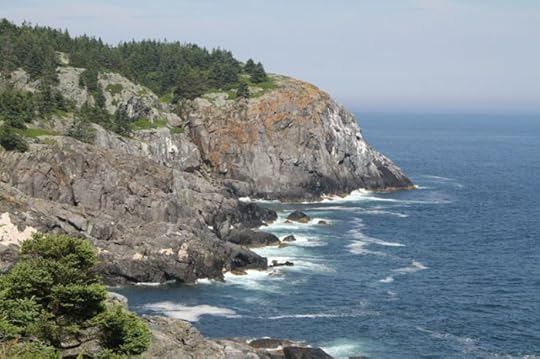
On Pinterest I also found this image of cliffs on Little Moose Island :
I picked up a lot of useful information from sites like the state parks Federal Wildlife pages on the Maine Coastal Islands reserve.
Google Maps was helpful, too:

Ultimately I gave my fictional island a fictional name location: Pickerel Bay. A pickerel is a kind of fish.
Although when it came to what kind of fish are plentiful in December near an island like that, it turns out that harbor pollock school close to cliffs in the winter.
I also researched what kind of whales our heroes would be likely to see from the Watch Point:
Okay, and that led me to this video from Norway, not Maine, but it’s too cool not to share:
WATCH POINT can be bought singly or as part of Riptide Publishing’s 2017 Charity Bundle to benefit the Russian LGBT Network.
Find Watch Point other sites: Amazon | iBooks | Barnes & Noble | Goodreads
November 8, 2017
But how much research do you need for a Navy SEAL romance?

Turns out if you’re me, you need to do a ton of research to write a Navy SEAL romance. When I pitched the idea to Riptide to write WATCH POINT for their charity holiday bundle, I hadn’t written military romance before, much less US Navy SEAL romance.
The first thing I did was read some (heterosexual) Navy SEAL romances to get an idea of what was going on in the genre. Mostly I was disappointed by the lack of Navy SEAL content in these books, but this is often my gripe with romance novels, where the characters’ jobs are sort of just a label applied to them which doesn’t actually provide a tapestry of rich details for their story to unfold on.
If the heroine is a brain surgeon, I expect to learn something about what it’s actually like to be a brain surgeon and how being a surgeon, going through med school, etc… shaped her personality and her worldview. If the hero is a firefighter I expect to learn something about firefighting while reading the book–and he better run into a burning building at some point in the plot.
Among the questions that dogged me while I was writing this book:
– what kind of shoes/boots do Navy SEALs wear?
– do SEALs work together in platoons? units? squads? how many in a group?
– what slang terms are specific to the SEALs (vs the rest of the Navy, US military in general, etc)
I wasn’t able to find answers to all my questions, but I hopefully built enough of a unique point of view for Eric, the hero and narrator of the book, that it comes across believable and immersive.
Of course, what’s “believable” in a romance novel can be debated: we expect the reader to suspend some disbelief in order to fully enjoy the thrillride of the book. So “believable” can be a moving target, and very much in the eye of the beholder. But here are links to a ton of the online resources I used while writing the book (and which I’ll return to if I ever write a sequel…!):
So here’s a pile of what I learned, and from where:
SLANG
One thing I had read quite a while ago is that books often make the mistake of having Navy SEALs referred to as “soldiers” whether in the text or in dialogue, i.e. “Do you hear me, soldier?” and that this is wrong. SEALs should apparently never be referred to as soldiers, since they’re in the Navy, they’re Sailors. But since they’re a very specialized part of the Navy, not exactly serving on ships in the same way as someone “sailing,” I wondered if there was another term. The term SEALs seem to use for themselves is “operator.” When they go into the field (or water…) to do something it’s called an “operation” and the men are operators.
At Wiktionary there is a page of Navy Slang. From what I understand the SEALs have their own slang, but every SEAL is a Navy sailor and would be familiar with this. My favorite entry:
“Fuckface: Any person or thing which has a face.”
A page on slurs used by one branch of the military for another, ie. swabbie, ground-pounder, jarhead, squid: http://www.beforejoiningthemilitary.com/squids-jarheads-grunts-the-chair-force-and-other-military-stigmas/
Navy Boot Camp Slang: from NavyDads.com — http://www.navydads.com/forum/topics/navy-boot-camp-slang-learn-to
“Once your soon to be Sailor ships out for Recruit Training Command it’s time to speak the language. Your Sailor will arrive as a SR ( Seaman Recruit ) and after passing battlestations they will be known as United States Sailors. Navy Dads wishes them the best from the first few days when they’re known as smurfs to when you arrive at PIR to seeing them as Sailors. Good luck to them during boot camp and good luck to you learning their language.”
Overall, NavyDads.com has some great resources. They have other glossaries and slang pages, as well.
General Navy Stuff
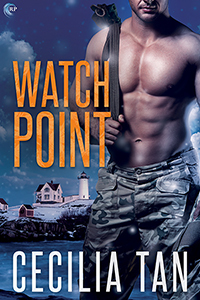 Navy Boot Camp (not the same as SEAL BUD/S): http://www.military.com/join-armed-forces/navy-boot-camp-schedule.html
Navy Boot Camp (not the same as SEAL BUD/S): http://www.military.com/join-armed-forces/navy-boot-camp-schedule.html
“How My Negligent Discharge in Iraq Ruined My Army Career”: https://foreignpolicy.com/2011/05/16/how-my-negligent-discharge-in-iraq-pretty-much-ruined-my-army-career/
Handgun commemorating the 50th Anniversary of the SEALs: http://www.gunsholstersandgear.com/2013/01/20/sig-p226-mk-25-special-edition/
SEAL Life and Experience
SEAL Boots/Footwear: http://sealgrinderpt.com/discounts/top-10-navy-seal-hiking-boots.html/
–As it turned out my question about what kind of boots a SEAL wears was copiously answered by this blog post. The Bates 922 is apparently what’s issued at BUD/S but every terrain and operation requires a different kind of shoe.
SEAL Selection and training: https://en.wikipedia.org/wiki/United_States_Navy_SEAL_selection_and_training
Hell Week: https://navyseals.com/nsw/hell-week-0/
A Navy SEAL’s tips for Surviving Hell Week: https://thechive.com/2017/01/31/navy-seal-shares-10-tips-to-train-for-hell-week/
Among the great tips he gave, don’t bulk up with weight lifting: you’ll regret having to carry that muscle mass. Also: “Occasionally pour water in your boots to work out as that is how you will work out at BUD/S (many times). It is good to have drain holes in your boots to drain excess water.”
A SEAL speaks out on training from BUD/S to Teams: http://www.businessinsider.com/current-seal-speaks-out-and-talks-about-seal-training-from-buds-to-teams-2012-6
Among his tips: “Never stand between the Zodiac and the beach. That f***er weighs a ton and comes fast.”
I of course also looked up how much a Zodiac actually weights and other specs since the use of one is pretty important in the book.
* Combat Rubber Raiding Craft
* Zodiac Milpro Website
What I couldn’t find anywhere though was do Navy Sailors or SEALs have a nickname for the CRRC/Zodiac? I feel like there must be, but I didn’t find that.
Chamber Ride (exercise in anoxia): http://mfwright.com/chamber.html
SEAL Platoons: http://www.americanspecialops.com/navy-seals/seal-platoon/
Structure of the SEALs: https://navyseals.com/nsw/structure/
The “Budweiser” (trident insignia): https://en.wikipedia.org/wiki/Special_Warfare_insignia
History of the Seals 1984-2012; http://www.defensemedianetwork.com/stories/u-s-navy-seals-from-goldwater-nichols-to-the-present-day-1984-2012/
SEAL Frog Bone Tattoo: I decided against giving Eric a tattoo. I read a lot of blogs and articles about it. SEALs who may be captured or do clandestine work don’t want tattoos that could identify them as US military or special forces. Apparently a lot of guys who get the SEAL trident tattoo are fakers trying to make people (usually women they impress) think they are ex-SEALs. Some guys get the trident AFTER they are no longer active on operations. A tradition did start in 2005, apparently, of getting a skeleton of a frog (SEALs are “frogmen”/divers) tattooed if a SEAL in your platoon/squad/team dies, and overall the military are getting much more lenient about tattoos. If I write more books about Eric’s team, at least one of them will have the frog bone tattoo.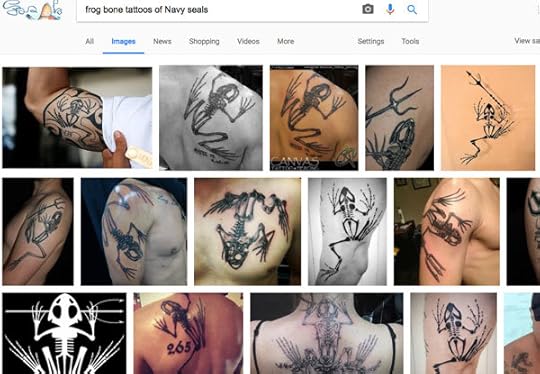
Misc
At one point in the story our hero refers to a Breitling watch with a 24-hour face and manual wind. There are a bunch of models I looked up. The Cosmonaute is the classic version but there are many others.
WATCH POINT can be bought singly or as part of Riptide Publishing’s 2017 Charity Bundle to benefit the Russian LGBT Network.
Find Watch Point other sites: Amazon | iBooks | Barnes & Noble | Goodreads
November 7, 2017
Romance hero picspam: Eric the Navy SEAL in WATCH POINT
Watch Point is my gay Navy SEAL abduction romance, which is in Riptide’s holiday charity bundle right now. The book can be bought singly or as part of Riptide Publishing’s 2017 Charity Bundle to benefit the Russian LGBT Network. You can also purchase Watch Point on other sites: Amazon | iBooks | Barnes & Noble | Goodreads
Our narrator, Eric, is an ex-SEAL who worked as a bodyguard for a billionaire after being discharged under Don’t Ask, Don’t Tell. Our story is about what happens when Eric kidnaps the billionaire’s 22-year-old son for revenge. (Hint: lots of kinky sex and angst.)
I didn’t have a specific actor or model in mind when I dreamed up Eric. When I imagine a character it’s usually from the inside out. Their heart is more important than their eye color, to me. But inevitably I have to go hunting for images to give to the cover designer, publisher, publicist, and so on, which will match the description in the book.
I don’t know where I found this guy, but I had a sticky note on my computer screen for a couple of months that just said “Remington Hoffman.” It was there for so long I forgot what it was for. With a name like that it could have been a romance hero, no? Because I’m too busy writing books to watch TV or see more than a small handful of movies a year I’d never seen him before and didn’t know he’s a model and actor.
But when I turned the manuscript in to the editor in June, I Googled the name to see why I’d written it down. And I realized I had found a guy who could be cast as Eric if Watch Point was ever made into a movie.
Examples:
From a random Pinterest board. Haven’t been able to find original source, but this was the photo that first caught my eye. Hello!
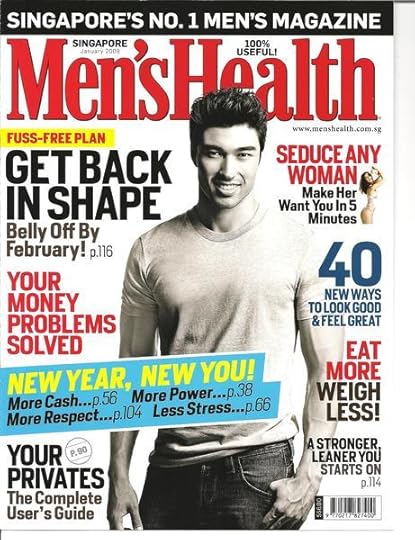
Here he is on the cover of Men’s Health magazine. Eric being an ex-SEAL even his “out of shape” is still pretty damn well in good shape, but it’s lean muscle, good for running through jungles and up beaches and whatnot, not overly bulked up. I read a lot of blogs by Navy SEALs giving advice to guys who want to be SEALs. They all said don’t build weight-lifting muscle mass. You won’t want to carry that extra weight around any more than you’d want to carry 30 extra pounds of flabby fat. The more I read about Navy SEALs the more I 
From Hoffman’s online modeling portfolio at the Look Modeling Agency.
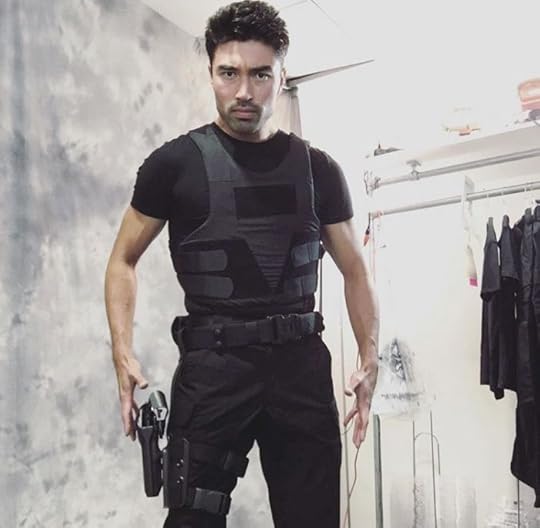
Remington Hoffman posted this image to his Instagram about being a SWAT officer on THE CATCH. Works for me!
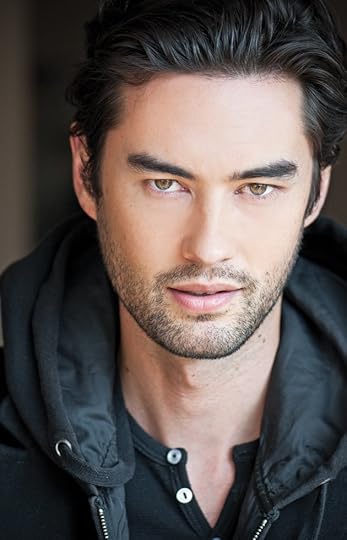
Finally, I think this is someone else, not Hoffman, but I could not figure out who. The filename said Philippe, but it doesn’t seem to be Philippe Koo, either? Google Image search turned it up at IMDb but I couldn’t find what page it was on. He’d make a good Eric, too.

WATCH POINT can be bought singly or as part of Riptide Publishing’s 2017 Charity Bundle to benefit the Russian LGBT Network.
Find Watch Point other sites: Amazon | iBooks | Barnes & Noble | Goodreads



